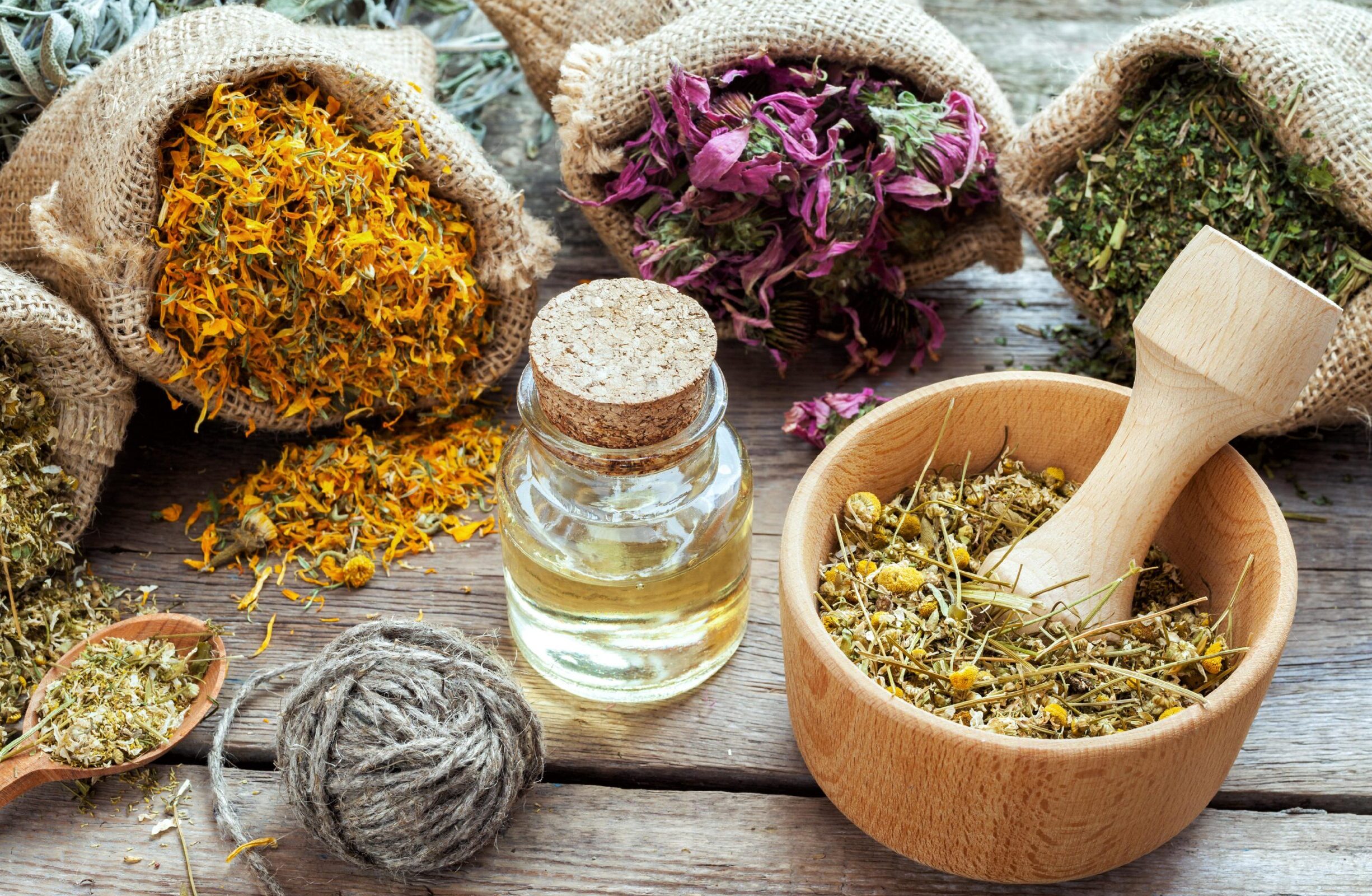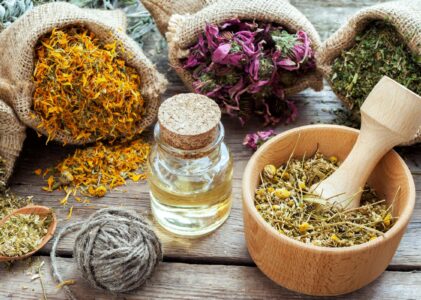Herbs have been used for centuries for their medicinal properties and are still widely used today. Herbs are plants or plant parts that are used for their therapeutic properties and can be consumed in various forms such as teas, tinctures, or capsules. The Healing Herbs, a comprehensive guide to using medicinal plants, provides information on how to use herbs safely and effectively. The book examines 100 of the most widely used and easily available medicinal plants, tracing their history and healing applications. The Lost Book of Remedies is another comprehensive guide that provides information about herbal plants and their uses. These resources, along with others, offer an introduction to the world of herbs and their benefits.
Incorporating herbs into your daily routine can provide numerous benefits for healing and wellness. Herbs have been found to have anti-inflammatory, antibacterial, and antioxidant properties, making them useful for treating a variety of ailments. The Woman’s Herbal Apothecary is a guide to herbal remedies for common health concerns, offering novice herbalists and advanced practitioners alike a lifelong guide to herbal remedies. Herbs for Healing: Mother Nature’s Herbal Remedies is another comprehensive guide that provides information on how to harness the power of herbs for better health and well-being. By incorporating herbs into your daily routine, you can take advantage of their healing properties and improve your overall health.
There are many types of herbs that can be used for various purposes. The Healing Herbs provides information on 100 well-known and widely available herbs, including their history, healing applications, and preparations. The Complete Book of Herbs is another comprehensive guide that offers over 120 step-by-step recipes and practical, easy-to-make gift ideas. Herbs for Common Ailments provides information on how to make and use herbal remedies for home use. Other resources, such as the Complete Medicinal Herbal and Rodale’s Illustrated Encyclopedia of Herbs, offer a complete guide to the healing properties of herbs. By exploring the different types of herbs and their uses, you can find the ones that work best for you and your specific needs.
Understanding the healing properties of herbs
Herbs have been used for centuries for their healing properties and are still widely used today. One of the most significant benefits of herbs is their anti-inflammatory and analgesic properties. Many herbs, such as turmeric and ginger, contain compounds that have been shown to reduce inflammation and alleviate pain. However, it is essential to note that some herbs may interact with medications and should be used with caution. For example, the use of anti-inflammatory medication during the first week of bone healing may alter the inflammatory response and inhibit bone healing. Therefore, it is crucial to consult with a healthcare professional before using herbs for medicinal purposes.
Herbs are also known for their antimicrobial and antibacterial properties. Many plants contain compounds that can fight against harmful bacteria and viruses, making them a natural alternative to conventional antibiotics. For example, honey has been used for centuries as a natural antibacterial agent due to its high viscosity and ability to maintain a moist wound condition. Additionally, herbs such as garlic and echinacea have been found to have antiviral properties. Incorporating these herbs into one’s diet or using them in herbal remedies can help support the immune system and fight against infections.
Another essential property of herbs is their antioxidant potential. Antioxidants are compounds that can protect against oxidative stress and reduce the risk of chronic diseases such as cancer and heart disease. Many herbs, such as chamomile and green tea, are rich in antioxidants and can be easily incorporated into one’s daily routine. Furthermore, herbal teas, such as peppermint and chamomile tea, have been found to have a calming effect on the body and mind, making them an excellent natural remedy for stress and anxiety. In conclusion, herbs have a wide range of healing properties and can be a valuable addition to one’s wellness routine.
Popular herbs and their uses
Chamomile is a popular herb that has been used for centuries to soothe nerves and promote sleep. Chamomile contains compounds that have a calming effect on the body, making it an effective natural remedy for anxiety and insomnia. It has also been used to treat hysteria, nightmares, and other nervous conditions. Chamomile can be consumed as a tea or taken as a supplement. In addition, it is a key ingredient in many home remedies and herbal preparations.
Echinacea is another popular herb that is known for its immune-boosting and infection-fighting properties. Native Americans have used echinacea for hundreds of years to treat a variety of ailments, including sore throat, colds, and flu. Echinacea is believed to enhance the immune system by stimulating the production of white blood cells, which are responsible for fighting infections.It can be consumed as a tea or taken in supplement form.
Ginger is a versatile herb that has been used for its medicinal properties for thousands of years. It is commonly used to alleviate nausea and vomiting, particularly in pregnant women and chemotherapy patients.Ginger has also been found to have anti-inflammatory properties, making it useful for reducing pain and swelling.Ginger can be consumed as a tea, added to food, or taken as a supplement. It is a popular ingredient in many natural remedies and herbal preparations.
How to use herbs for healing
Herbs have been used for centuries as a natural way to promote healing and wellness. One of the most popular ways to use herbs for healing is through herbal teas and infusions. Tea is a gentle and natural way to absorb the healing properties of herbs, and it is also an inexpensive way to enjoy their benefits. There are many resources available that offer comprehensive guides to herbal teas and infusions, including “The Healing Herbal Tea Bible” and “20,000 Secrets of Tea”. These guides provide information on which herbs to use for specific health concerns, how to brew the tea properly, and how much to drink for maximum benefit.
In addition to herbal teas, herbs can also be used in the form of supplements and tinctures. Herbal supplements can be found in health food stores and online, and they are a convenient way to incorporate herbs into your daily routine. Tinctures, which are concentrated herbal extracts, can be added to water or taken directly under the tongue for fast absorption. A comprehensive guide to herbal supplements and tinctures can be found in “The Encyclopedia of Herbal Remedies and Natural Medicine“. This guide provides information on how to grow and utilize medicinal herbs for tinctures and other herbal remedies.
Herbs can also be used topically for skin and hair health. Herbal remedies for skin and hair can be found in “Herbs for Healing: Mother Nature’s Herbal Remedies” and “The Complete Collection of Healing Herbs and Plants to Cultivate”. These guides offer information on which herbs to use for specific skin and hair concerns, how to prepare and apply herbal remedies, and how to store them for future use. For example, nettle extract can help support the skin’s natural healing abilities, while chamomile can calm beard burn and cinnamon can promote a glowing complexion.

